Feel a Pain in Your Butt as You Ride? Try These Exercises
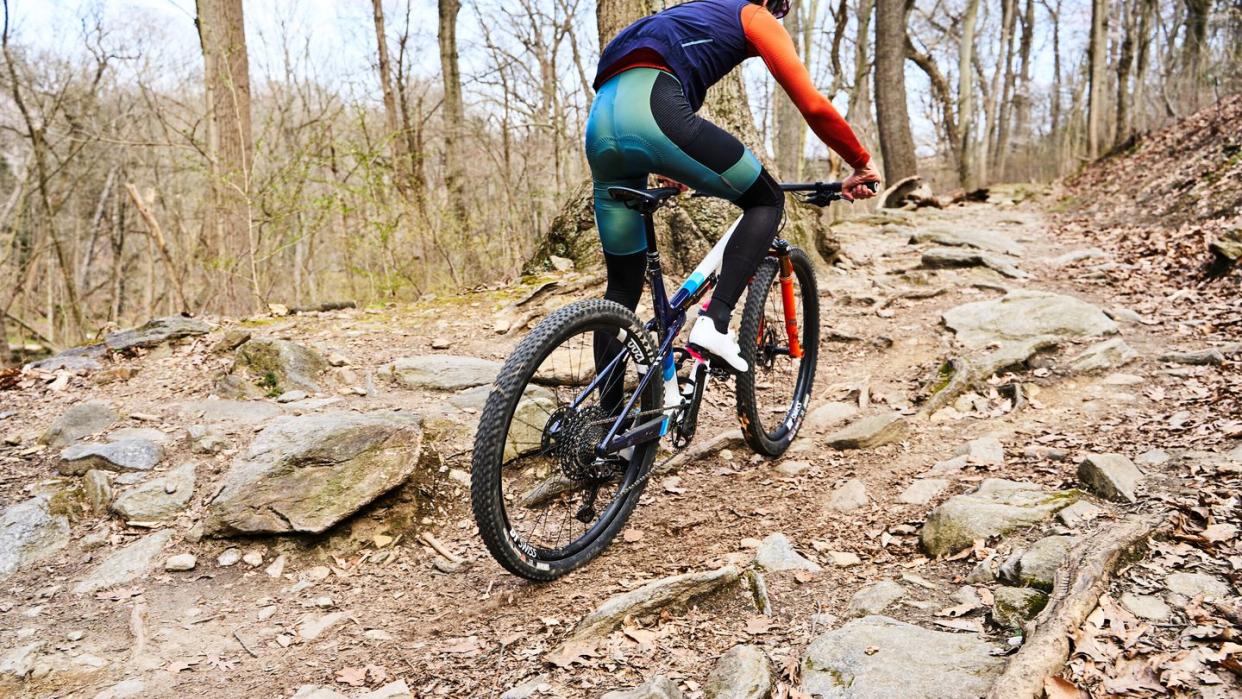
One of the worst things about piriformis pain is that it often doesn’t just affect your riding; it stays with you all day. You may feel it sitting at your desk and in your car. It may ache at night and mess with your sleep. You may have the urge to stretch or massage the area, but it’s difficult to target and often tender to the touch.
When the piriformis is acting up, it can be real pain in the butt. But there are some things you can do to relieve piriformis pain and prevent it from flaring up in the future.
To better understand how the piriformis works and the best way to ease aches we spoke with two physical therapists, both of whom ride and work with cyclists. Here’s what you need to know.
What is the piriformis?
One of the lesser-known gluteal muscles, the piriformis is a diagonal, pear-shaped muscle that originates at the sacrum, the triangular bony structure located at the base of the spine, and connects to the femur, a.k.a. the thigh bone. It functions to rotate the hip and move it away from the body’s midline (an action known as abduction). But its bigger job, especially in cycling, is stabilization.
“The piriformis stabilizes the hip joint and the sacroiliac joint as the leg moves up and down,” Renee Roth Powers, P.T., D.P.T., owner of Fundamental Velo Cycling-Specific Physical Therapy and Performance in Rockville, Maryland, tells Bicycling. It helps hold the pelvis steady so you can use the muscles in your glutes and legs to generate power.
The piriformis is at peak activation as you push over the top of the pedal stroke when the hip is flexed and slightly internally rotated. As the foot pushes down on the pedal and the knee extends due to the force of the quads, the piriformis is less active.
Also notable is the piriformis’s proximity to the sciatic nerve, which roots in the lower spine and travels down the back of each leg. The sciatic nerve passes below the piriformis in most people, but Roth Powers explains that its path can vary. “For some, the nerve goes through the piriformis muscle, putting these people at greater risk for piriformis syndrome,” she says.
What is piriformis syndrome?
Piriformis syndrome, which usually manifests as pain or feelings of tightness in the hips, butt, or lower back, is a common diagnosis that can indicate a couple of different conditions. “One is a piriformis muscle that is too short and stiff. This puts pressure on the sciatic nerve and creates inflammation and irritation,” Roth Powers says.
Habitually sitting or standing with the legs wide or turned outward or resting an ankle on the opposite knee in a seated position can be a contributing factor to this type of piriformis syndrome.
Weakness may also be the source of piriformis pain, says Jessie Duppler, P.T., D.P.T., creator of the Chain Reaction Strength Revolution program for cyclists. “A tight muscle is not a strong muscle. It’s typically a muscle that’s holding on for dear life,” she says, noting that cycling, a forward-moving sport, won’t strengthen the hip rotators—that requires side-to-side or rotational movement.
“If the piriformis isn’t strong, it can’t stabilize the hip well. So, it will tighten up or shorten to do its job. But it typically doesn’t do a really good job,” Duppler explains.
In other cases of piriformis syndrome, the piriformis is “long and floppy and does not support the hip,” Roth Powers says. Resting in “easy” positions that require minimal energy, like standing with one hip jutting out, sitting with crossed legs, and even side-sleeping in the same position every night, can elongate the muscle over time, robbing it of its effectiveness.
Piriformis Exercises for Cyclists
Any persistent pain (in the piriformis region or otherwise) should be evaluated by a licensed healthcare professional, as treatment plans will vary depending on the individual. However, the strength, mobility, and breathing exercises below are likely beneficial to most cyclists.
You’ll notice that there aren’t any typical piriformis stretches included. That’s intentional. “I always tell people tightness is a symptom, not a cause. So, if you’re just stretching a muscle that’s tight and not addressing why it’s tight, you’re going to be stretching forever,” Duppler says.
Also, stretching the piriformis may exacerbate pain and discomfort. “The piriformis muscle goes over the sciatic nerve in a lot of people. So a lot of times stretching the piriformis can actually aggravate it and cause people to have sciatic symptoms and low back pain,” Duppler adds..
1. Clamshell
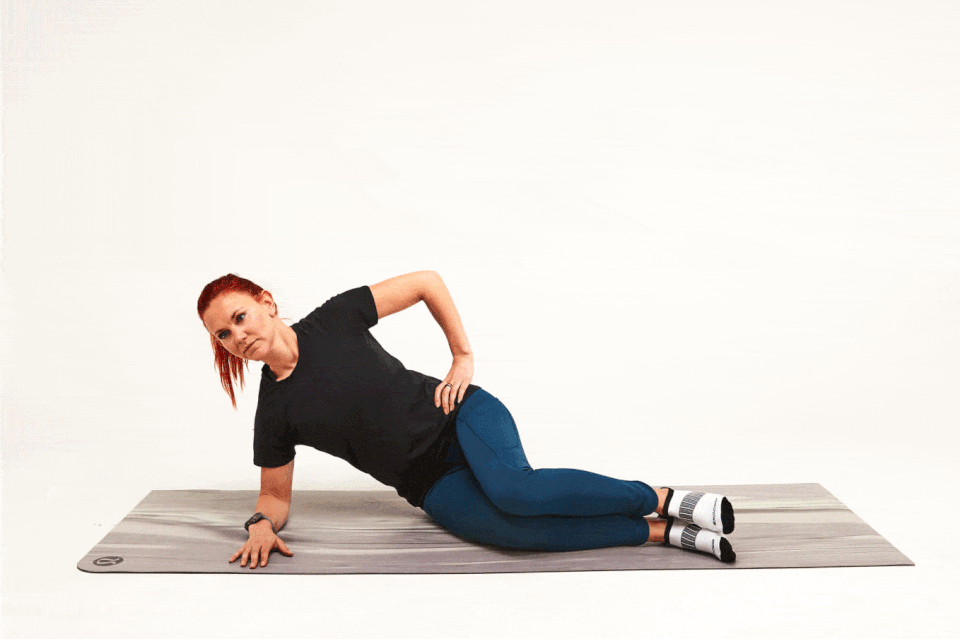
Why it works: Most versions of the clamshell exercise target the larger glute muscles, not the hip stabilizers. To better engage and strengthen the piriformis, Duppler recommends bringing the hips and knees to 90-degree angles. This position lengthens the glutes, allowing the muscles underneath them to work better, she says.
The other important distinction relates to your mind-muscle connection. “In order to really activate the small stabilizers underneath the glutes, you have to visualize that you’re rotating your thigh to lift your knee up instead of just lifting the knee up and down,” Duppler says. This changes how your brain recruits the muscle.
How to do it:
Lie on right side, legs together. Flex hips and knees 90 degrees.
Initiating the movement from hip, slowly rotate left thigh to lift knee just an inch or two. Keep the hips stacked
Hold, then slowly lower leg.
Repeat. Do 20 reps.
Then switch sides. Complete 2 sets per side.
2. Hip Hike
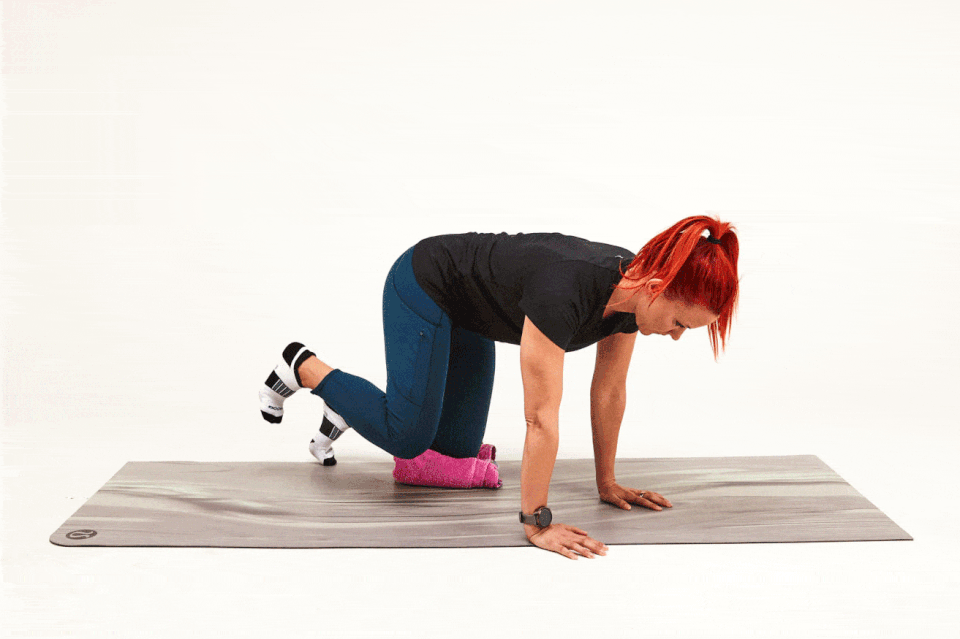
Why it works: Technically, the hip hike is a spine-strengthening exercise, but Duppler recommends it to her clients with piriformis issues. “The piriformis will get tight and try to stabilize the pelvis when we don’t have spinal stability. Those two things go hand in hand,” she says. “We need the spine to have stability, especially when we’re cycling because we’re in that bent-over position.” If you fortify the spine—particularly the tiny stabilizing muscles called the multifidi—the piriformis can release its “death grip” on the pelvis, she says.
How to do it:
Start on all fours with elbows and shoulders over wrists, hips over knees, back flat, and neck neutral.
Place a small book or a folded towel under left knee so that pelvis dips to the right.
Keeping back flat, draw right hip up so that it’s in line with left. Be careful not to shift weight to the left. You should feel core working.
Hold, then slowly lower knee.
Repeat. Do 20 reps.
Then switch sides. Complete 2 sets per side.
3. Prone Hip Rotation
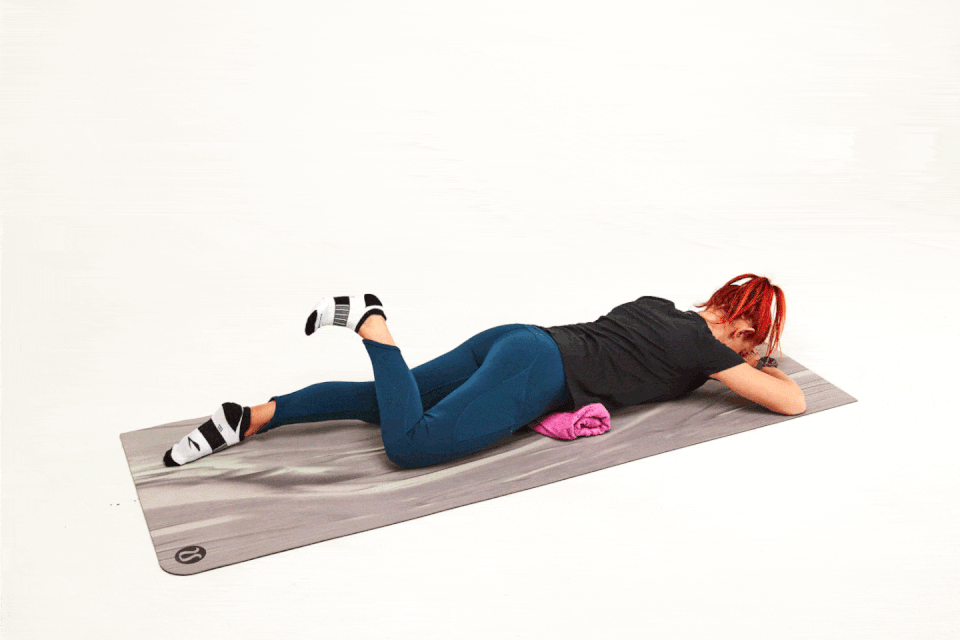
Why it works: This mobility drill engages the piriformis in both internal and external rotation, helping to improve the hip’s overall range of motion. Roth Powers prefers this type of exercise over classic piriformis stretches like the “figure-four” stretch, which can be too aggressive and potentially ineffective if you have limited hip mobility. “This exercise helps the piriformis rotate the thigh outward, but it is not an excessive stretch because the hip is straight and not bent,” she says.
How to do it:
Lie facedown with a small towel rolled up under waist to keep lower back from arching.
Bend the right knee 90 degrees.
Rotate the right thigh as you slowly lower the leg to the right and then to the left, like a windshield wiper.
Repeat. Do 20 total rotations.
Then switch sides. Complete 2 sets per side.
4. Kitten Pose
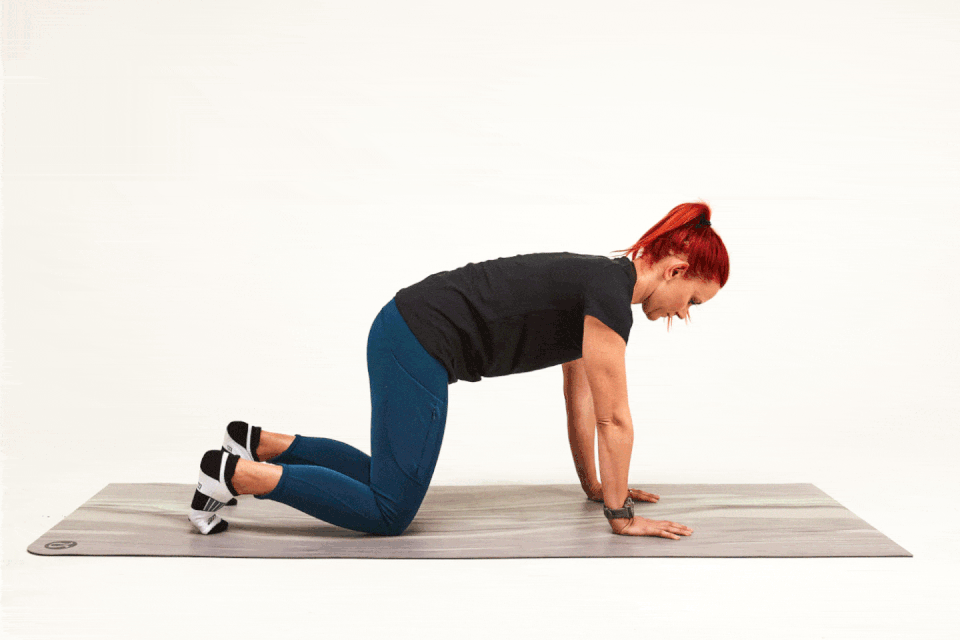
Why it works: Kitten pose is similar to cat-cow pose, but the motion is smaller, as you only mobilize the lower portion of the spine while keeping the midback neutral. “The more the lumbar spine can move, the better the pelvis can move and the better the piriformis can function,” Duppler says.
How to do it:
Start on all fours with elbows and shoulders over wrists, hips over knees, back flat, and neck neutral.
Keep back flat and neck neutral as you tilt pelvis back, drawing belt buckle toward belly button.
Return to a neutral spine.
Repeat. Do 10 reps.
Rest and complete 2 sets.
5. Diaphragmatic Breathing
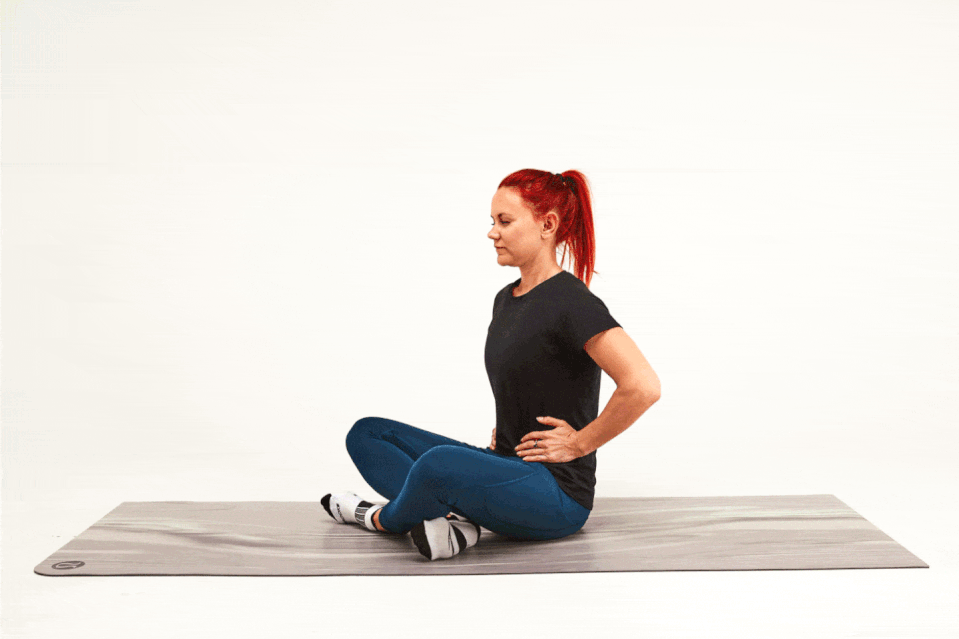
Why it works: “The diaphragm plays a big part in how the spine moves because there are fibers of the diaphragm that go onto the spine,” Duppler says. “Cyclists, because we’re in that bent-over position, it makes it harder to breathe to begin with. It’s really important for us to make sure that the diaphragm can move appropriately so that the hips can move appropriately and the piriformis doesn’t have to do so much work.”
How to do it:
Lie faceup with knees bent and feet on the ground. Or sit comfortably, chest tall, shoulders down and back.
Breathe in through nose and focus on expanding lower ribs in all directions, including out to the sides and through back into the floor. Keep neck neutral and limit the movement in chest and shoulders.
Exhale, using the abdominal muscles to pull the ribcage down.
Complete 4 deep breaths.
Rest and breathe regularly for one minute.
Repeat for a total of 4 sets.
Tips for Alleviating Piriformis Pain
Making small changes in your everyday life can help prevent and improve piriformis pain. Here are a few simple tips that can have a significant effect:
1. Check Your Bike Fit
Improper bike fit will generate a host of problems, including hip and lower back strain. Work with a professional bike fitter to make sure you’re set up for success.
2. Mind Your Posture
“Don’t stand with your weight shifted to one leg and the hip stuck out to the side. Stand with weight equal on both legs as much as possible,” Roth Powers says. “Look for positions that are sustained in daily life where there is a stress or maximized position of the hip—they are the culprits. It is much better to address and normalize these habits rather than do an exercise for five minutes that is trying to undo these habits that are sustained all day long.”
3. Fix How You Sit (and Sleep)
Don’t sit with your legs crossed or with your ankle resting on the opposite knee. “Both thighs should be supported from the hips/pelvis to the back of the knees. Both feet should be in comfortable contact with the floor,” Roth Powers says. “If a person is taller than six feet, they should be certain that their hips and knees are at 90 degrees. People often sit in chairs that are too short with their knees higher than their hips. This puts all the postural weight on the buttocks and can aggravate the sciatic nerve and piriformis,” she says. And if you tend to sleep on your side, place a pillow between your knees for better hip alignment.
4. Lay Off the Self-Massage
Resist the urge to “loosen up” a tight-feeling piriformis with lots of pressure via foam rolling or a massage gun. If the sciatic nerve is irritated or inflamed, pummeling it will only worsen your condition.
5. Rest and Recover
No one wants to cut back on their training, but it may be necessary in some situations. “Continuing to ride at your desired volume and intensity may cause inflammation and irritation, which will prolong the condition,” Roth Powers says.
You Might Also Like

